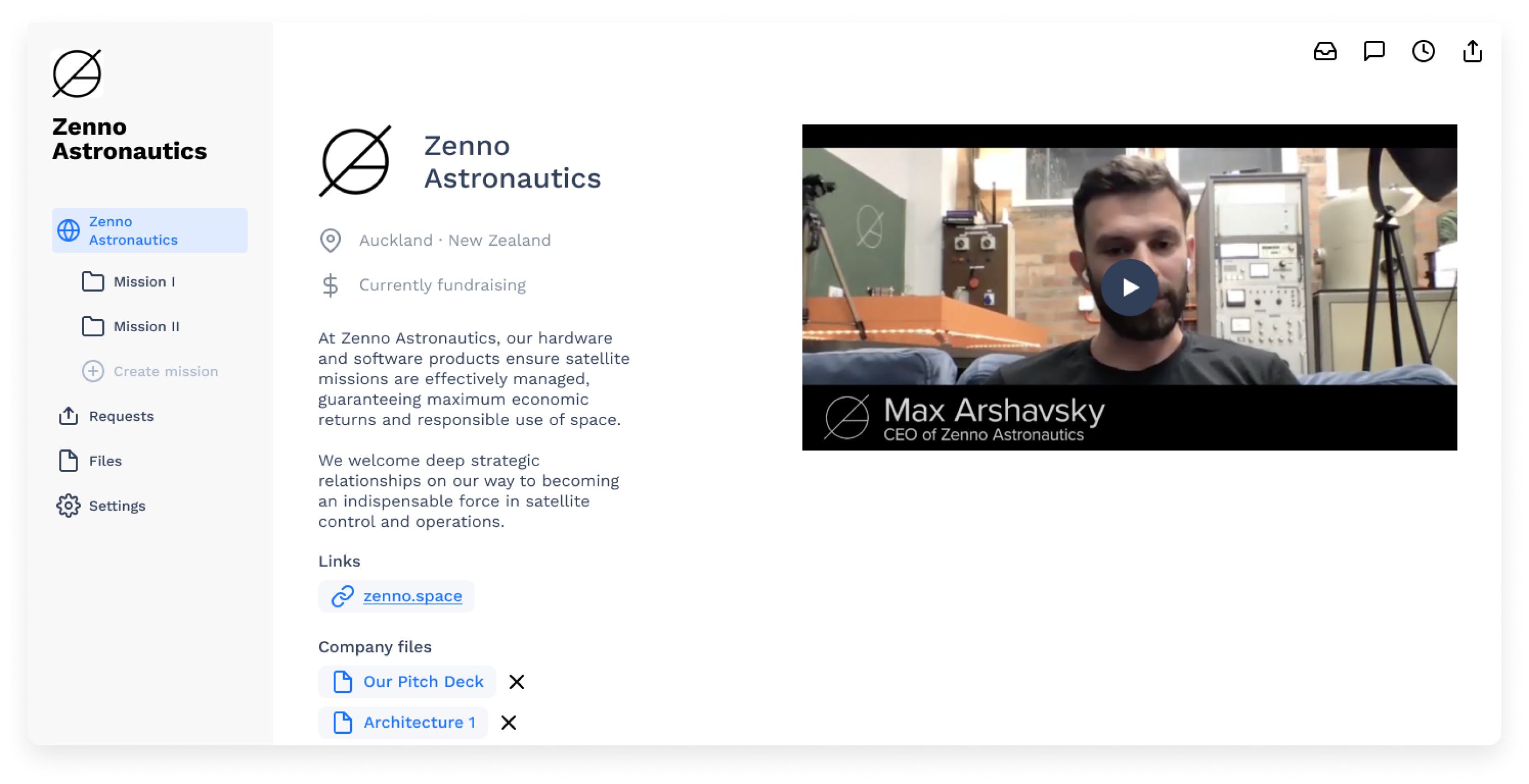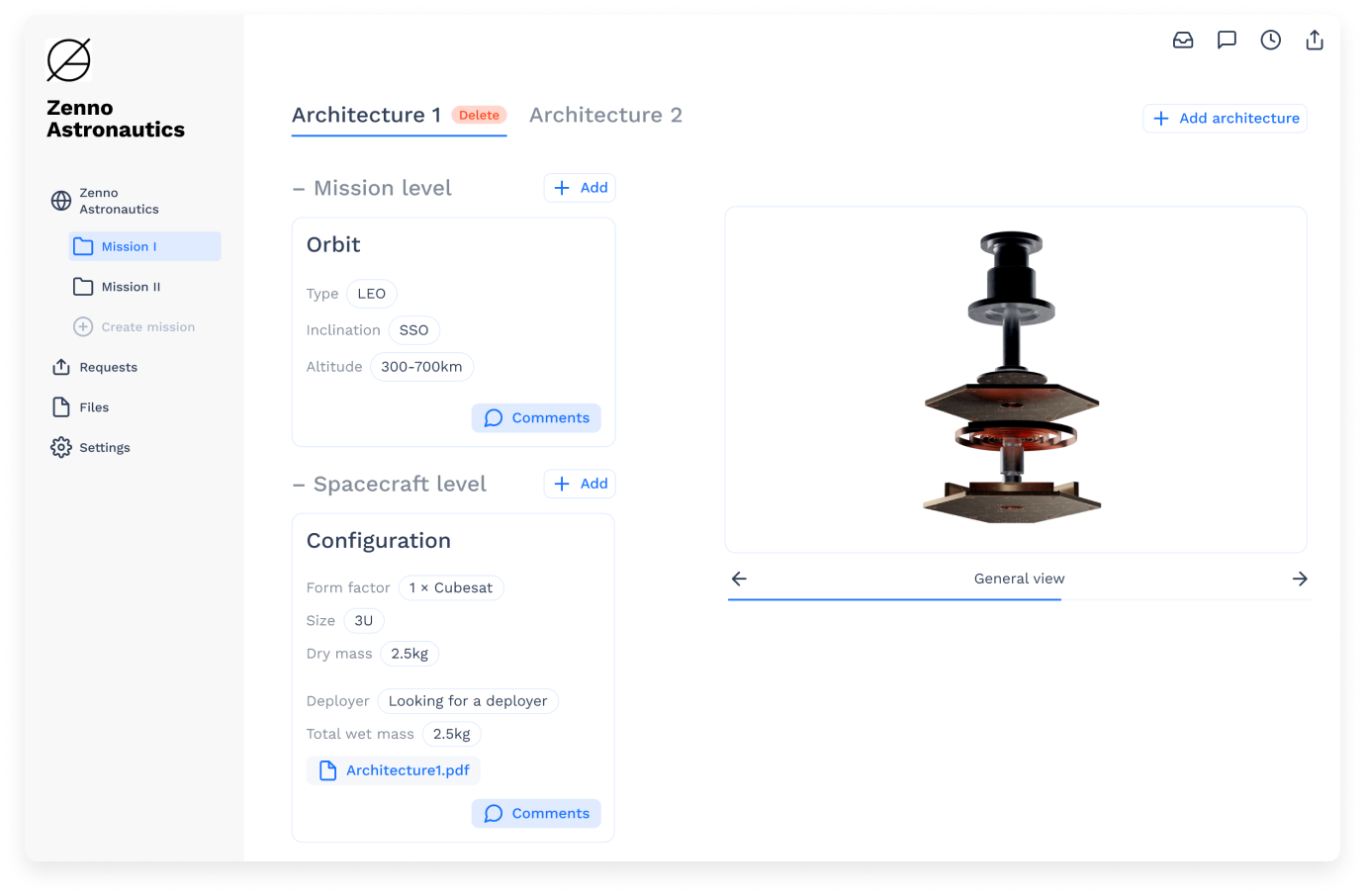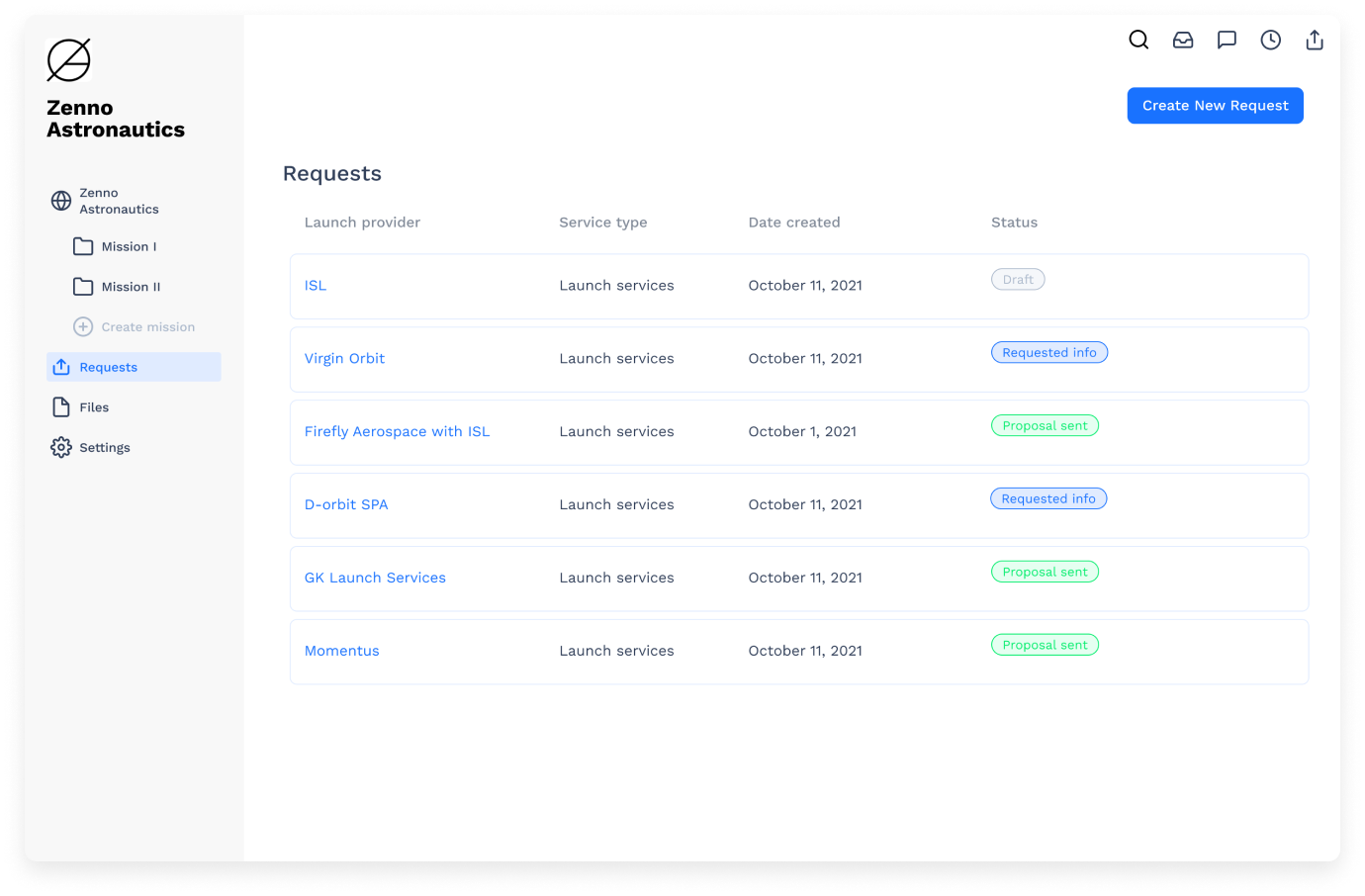
Using Precious Payload tools to redesign mission architecture, get funding, and land first paying customer

Precious Payload's KYC (know-your-client) Profile page helps you build trust with suppliers.
Create your profileGOALS:
Design a technology demonstration orbital mission while balancing time-to-market strategy, costs, and risks.
Build a mission supply chain by getting feedback and guidance from a maximum number of suppliers while protecting trade secrets and complying with export control regulations.
Secure first paying customer through partnership with a launch provider.
Build a mission supply chain by getting feedback and guidance from a maximum number of suppliers while protecting trade secrets and complying with export control regulations.
Secure first paying customer through partnership with a launch provider.
CHALLENGES:
Researching lead times, credibility, and prices takes up to 45 days per supplier.
Making a procurement decision requires analyzing at least 5-7 competitive proposals, which can take up to 4-5 months per supplier category.
Keeping every supplier on the same page throughout an ever-changing mission design generates hundreds of emails, unnecessary calls, and Excel files.
Making a procurement decision requires analyzing at least 5-7 competitive proposals, which can take up to 4-5 months per supplier category.
Keeping every supplier on the same page throughout an ever-changing mission design generates hundreds of emails, unnecessary calls, and Excel files.
RESULTS:
12 proposals
Delivered 12 negotiated proposals for taking payload to orbit (with verified technical requirements) under 4 weeks.
1st paying customer
Negotiated a partnership deal to get the demo payload on a space tug.
3 mission designs
Iterated 3 mission designs in less than 6 months while staying in sync with potential suppliers.
ABOUT THE CLIENT COMPANY:

“Using supermagnets for space applications gives us more control of the skies, keeps them cleaner, and revolutionizes space travel”
Max Arashavsky, CEO and founder of Zenno Astronautics
Zenno Astronautics was born at the University of Auckland (New Zealand). A group of top engineering students asked themselves, what if space exploration wasn’t limited by fuel?
They got to work developing an engine that could answer this question through the use of fuel-free, safe electromagnetic technology.
The result? The Zenno’s magnetic engine, dubbed the SuperTorquer, can move in any direction, propelling the craft in orbit while using zero fuel.
They got to work developing an engine that could answer this question through the use of fuel-free, safe electromagnetic technology.
The result? The Zenno’s magnetic engine, dubbed the SuperTorquer, can move in any direction, propelling the craft in orbit while using zero fuel.
Zenno’s innovation creates very high magnetic field densities and dipole moments onboard a spacecraft without consuming essential energy, and at almost no net cost.
It can be used for complex maneuvers—like docking and rendezvous—and also for shielding payloads and crews during travel between planets, or even while working on the Moon. All of these tasks are easily and efficiently done using Zenno’s revolutionary application of electromagnetic fields.
It can be used for complex maneuvers—like docking and rendezvous—and also for shielding payloads and crews during travel between planets, or even while working on the Moon. All of these tasks are easily and efficiently done using Zenno’s revolutionary application of electromagnetic fields.
LAUNCH YOUR SPACE BUSINESS WITH US:
Case study: using Precious Payload to study feasibility
Increasing the Technology Readiness Level (TRL) of your product is key to securing funding for your company and converting those Letters of Intent to real revenue.
Designing an orbital demonstration mission for the payload is critical for its future commercial use. You need to provide ample, verifiable data, and do it all as fast as possible with minimum risks.
In order to pass the critical design review, a mission design team has to work closely with external mission contractors, starting from the mission feasibility study.
Designing an orbital demonstration mission for the payload is critical for its future commercial use. You need to provide ample, verifiable data, and do it all as fast as possible with minimum risks.
In order to pass the critical design review, a mission design team has to work closely with external mission contractors, starting from the mission feasibility study.
Due to the lack of secure collaboration tools to allow sharing technical data externally, today space industry satellite engineers spend up to 12 months designing the mission before bringing it in front of potential suppliers.
In 75% of the cases, the design team has to redesign the entire mission from scratch based on the feedback they get from contractors.
An average space startup loses 2.5 years and up to $1.5 million to unnecessary reworking and back-and-forth review calls with suppliers.
In 75% of the cases, the design team has to redesign the entire mission from scratch based on the feedback they get from contractors.
An average space startup loses 2.5 years and up to $1.5 million to unnecessary reworking and back-and-forth review calls with suppliers.
SOLUTION
Zenno engineers came up with two architectures of their tech demo mission design for a magnetorquer: a 3U CubeSat, and a hosted payload.
Together with Precious Payload's team, they spent less than two hours listing requirements for both architectures and creating a KYC profile for the company.
Our robust software then matched their requirements with hosted payload and launch opportunities, while the Zenno team specified their procurement preferences such as budget, risk tolerance, and timeframe.
Together with Precious Payload's team, they spent less than two hours listing requirements for both architectures and creating a KYC profile for the company.
Our robust software then matched their requirements with hosted payload and launch opportunities, while the Zenno team specified their procurement preferences such as budget, risk tolerance, and timeframe.
The Request for Proposal was sent to 80% of the industry's global launch providers (more than 25 companies). Verified sales engineers and business development managers from around the world were able to access the Data Room, verify the client, and leave their feedback in the form of questions and comments specific to individual data points in the mission design.
After a round of negotiations on the platform between Zenno and suppliers (without any Zoom calls or meetings), Zenno received seven negotiated and verified proposals and shortlisted three suppliers for pre-contract in under four weeks.
After a round of negotiations on the platform between Zenno and suppliers (without any Zoom calls or meetings), Zenno received seven negotiated and verified proposals and shortlisted three suppliers for pre-contract in under four weeks.
SOLUTION
4 weeks to run RFP
Reduced time-to-orbit by 4 months when using Precious Payload to run RFP/RFI cycles.
Saved 125+ engineering hours
Saved time on intro calls, NDA signing, exchanging emails and Zoom calls to negotiate requirements.
FEATURES
Mission Data Room

Zenno engineers used Precious Payload's Mission Data Room to share their requirements with suppliers.
One of the key features of Precious Payload's software is our Mission Data Room — a secure place to store mission requirements. It allows you to list mission-level, spacecraft-level, and service-level requirements using NASA/ESA's best practices and standards.
During the mission design phase, the Mission Data Room allows an engineering team to work on multiple concurrent mission designs. For example, you can design the same mission as a free-flying cubesat or a hosted payload using our mission templates in less than 30 minutes.
Views and Requests

Precious Payload acts as a Single Source of Truth on latest design revisions shared with suppliers
After finalizing the requirements, you can create a request to be submitted to an external collaborator or a supplier.
Precious Payload has templates to run Requests for Information or Proposals (RFI/RFP) for launch operators, hosted payload providers, insurance brokers, component manufacturers, and ground segment providers.
In order to keep trade secrets close to your heart and comply with export control regulations, you only need to share what is absolutelly necessary for your supplier to know.
This is why we developed a feature called Views.
Precious Payload has templates to run Requests for Information or Proposals (RFI/RFP) for launch operators, hosted payload providers, insurance brokers, component manufacturers, and ground segment providers.
In order to keep trade secrets close to your heart and comply with export control regulations, you only need to share what is absolutelly necessary for your supplier to know.
This is why we developed a feature called Views.
When sharing a request with a supplier, Precious Payload's software creates an encrypted collaboration space called Views and suggests which fields from the Mission Data Room should be included based on the type of service requested.
A know-your-client (KYC) profile of your company is attached to the View alongside the automatic Non-Disclosure Agreement a supplier signs upon accessing the View.
A View creator has full visiblity and an audit trail into which users get access to the information in a View. Every login is authorized via a one-time code send to a verified mobile number for maximum security.
A know-your-client (KYC) profile of your company is attached to the View alongside the automatic Non-Disclosure Agreement a supplier signs upon accessing the View.
A View creator has full visiblity and an audit trail into which users get access to the information in a View. Every login is authorized via a one-time code send to a verified mobile number for maximum security.

Max Arashavsky had some strong opinions after working with Precious Payload:
“Insane value for the money. They were a responsive, well-connected, and professional team.”
SUMMARY
Precious Payload’s tools are a game-changer for the space industry, and do what no other software has done before by pulling back the curtain on information previously hidden to new space actors.

